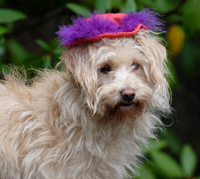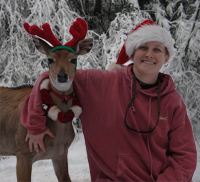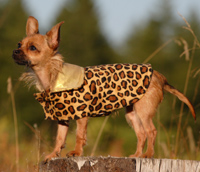Every conscientious animal lover wrestles with the question: what is the best, happiest, longest, richest life for an animal? Parents, zoos, Disney, rehabilitators, rescue groups, and 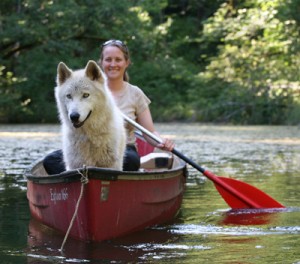 animal rights organizations have relentlessly asserted that, “Animals belong in the wild; nature is beautiful, peaceful, and good; captivity is bad; if you love animals, leave them alone; animals are happier in the wild than in captivity; animals need freedom to be happy; if an animal ‘must’ be in captivity, the highest goal is to recreate a wild life as faithfully as possible.”
animal rights organizations have relentlessly asserted that, “Animals belong in the wild; nature is beautiful, peaceful, and good; captivity is bad; if you love animals, leave them alone; animals are happier in the wild than in captivity; animals need freedom to be happy; if an animal ‘must’ be in captivity, the highest goal is to recreate a wild life as faithfully as possible.”
Animal lovers should set aside such propaganda and honestly examine this issue and decide for themselves what is truly best for each animal. While a “natural” existence is one possible life, in many cases humans can provide a better life for an animal in our world than it could enjoy in the wild: not merely an acceptable alternative, but a better life. Recreating nature should not be our objective: nature is brutal and unforgiving, and most wild animals live harsh, brief lives fraught with danger, hardship, and pain. Long ago man came in from the wild, sacrificing some theoretical freedoms for safety and comfort in a civilized world. Almost immediately, animals began following us, and most animals if given a choice will elect to live with man rather than in the wild.
If a person cannot provide for an animal a life that equals or surpasses the life it would live in the wild, then he should not commit to possessing the animal. The only intrinsic difference between a wild animal and a pet is that the pet has a caring, competent person dedicated to tending to its every need. Keeping most animals in an authentically “natural” way – even if such a thing were possible – would be neglectful, abusive, and unconscionable. We can and must do better than “the wild.”
Furthermore, because man has overrun the entire planet, “the wild” is essentially a thing of the past, a haunted memory. There are grievously few authentically wild places left on the globe, and many species are near extinction for the simple reason that there is no wild place left for them to live.
We should carefully study natural existence as a starting point from which we create optimal lives for our pets. We must set aside human preferences and rigorously evaluate every decision from the animal’s perspective. We may like cleanliness, but pig will rarely prefer a clean enclosure. We may like bright colors and lights, but many animals do not. We may like fluffy fabric beds, but furred animals may not care about texture and would prefer a material that is cooler and cannot harbor parasites. We may like the notion of an animal lounging comfortably in an huge meadow, but the animal might prefer to be in a small cave. What is ideal for one animal might be miserable for another. Forget about what you like, or what you think will look good to your friends, and focus on what is truly best for the individual.
Two primary arenas demand our attention in animal care: the physiological and the psychological.
Ensuring excellent physiological care is relatively straightforward: wild animals are inundated with fleas, ticks, intestinal worms, heartworms, flies, mosquitoes, and other parasites from which our pets should be kept free. Wild animals spend much of their life without enough food or water, or drinking brackish filthy water; our pets should have clean, fresh water at all times along with high quality balanced meals and vitamins, supplements, and treats to ensure maximal health. Wild animals are shot, poisoned, leg-trapped, and struck by vehicles. They are under constant stress and are held captive by geographic boundaries or other animals’ ranges. They are hunted and killed by animals of other species and regularly dominated or attacked by members of their own species in territorial or mating disputes; our pets should have ample space without threat of predation or injury and appropriate companionship. Wild animals are uncomfortably cold and wet or hot most of the time; our pets should be kept close to an ideal temperature at all times, and have access to dry clean bedding and shelter. Wild animals are unvaccinated against even the most common diseases and their injuries and illnesses go untreated and are often agonizing and eventually fatal; our pets should be given excellent preventive care, any injury treated immediately, any pain carefully managed, and as appropriate they should receive massage, chiropractic adjustments, homeopathy, acupuncture, etc. Our pets should receive well-planned exercise and regular grooming. Consequently they live an average of two to three times longer than their wild counterparts, and for much more of their lives they should be healthy, robust, and comfortable.
For some animals, particularly some fish, reptiles, and amphibians, meeting all of their physiological requirements may suffice to ensure an excellent life, but for many animals it is every bit as important to consider their psychological welfare. Our pets’ psychological needs are often subtle, and meeting them requires thought and careful observation. Recently I had the pleasure of visiting an excellent wolf facility with fabulous enclosures: acre upon acre of beautiful and natural space, regular natural food, wolves in pairs with virtually all of their requirements met. They were free to lounge where they wanted, had virtually no demands made upon them, and had hardly any stress in their lives. At first blush, it seemed excellent. Yet I found myself feeling profoundly sad as I walked around and looked at the animals. They had not found a home in man’s world; they were captive wild animals, caught between two worlds, living in extremely nice cages. Our host carefully explained that these were not pets, but I found myself wondering, “Why not?” Why not welcome them into our world and cherish them and give them the very best of both worlds? Their lives seemed empty: comfortable and safe, but with little purpose, little joy. (I was only there for a few minutes, and they may have great lives at other times; I am not commenting on their existence, only on my “feelings…”)
Driving home, I thought at length about why those animals’ lives did not seem rich to me, and I kept returning to the same notion: for millennia, canids have spent much of their time struggling: hunting, searching for water, digging a den, trying to cross a river, courting a mate. Their bodies, their minds, their endocrine systems, even their “spirits,” have evolved in the fire of struggle, and their health, fitness, and happiness are all linked to meeting and overcoming challenges.
When we take care of an animal, we remove danger and challenge in its life, but in doing so we risk removing most of the joy that comes from accomplishment. This may sound a little anthropomorphic—that animals would share our sense of joy at having achieved goals. But if you carefully observe an animal for a protracted period, it seems clear that they relish accomplishment. Solving a puzzle to get food, chewing through something large, dragging a log up a bank, catching a fly, digging a hole, winning a wrestling match – these are favorite activities of most canids. If you have ever watched a goat or a squirrel eating, you may have observed that they will often forgo easy food in preference for identical food that is more challenging to acquire.
Truly excellent animal care balances comfort and safety with challenges, obstacles, and activities that fulfill the animal’s nature, preclude boredom, promote exercise, and develop confidence. Be creative, and think about what would genuinely stimulate your animal.
Here are a few suggestions. Not all of them will fit your circumstances, but hopefully they will get you thinking about how to enrich your animal’s life:
First, some general concepts to remember:
- Safety: observe anything you give and make sure it is safe and does not overly stress your animal. Anticipate any way he could ingest, get stuck, fall, etc.
- Change: anything new and different is enriching.
- Response contingency: one of the best things your animal can learn is that he can influence the environment to cause a desired outcome. This decreases stress and increases learning in new situations as well as decreasing boredom!
- Stress: too much stress can be bad, but that does not mean all stress is. Fear and stress at reasonable levels are natural and healthy.
- Problem solving: many of these ideas are based on this notion. Create a problem and a motivation to solve that problem, and you have enriched their day.
- Physical challenges: resist the temptation to make life as easy as possible. The point here is to make things challenging.
- Learning: grasping new concepts and new games, remembering tricks and outcomes, these actually develop new neural paths. This not only increases your animal’s knowledge, it increases his confidence and willingness to try new things and his capacity to experience the world.
- Habit forming: everything you do is teaching habits and reinforcing behaviors, so consider what you are training with any new activity.
And here are some specific suggestions:
- Training, Training, Training!! You teaching new behaviors is the single greatest source of novelty! Not just obedience, try freestyle or teach a few tricks.
- Play. Remember, play is a great stress reliever, so spend time each day consciously playing with your animal. Wrestle, play chase, etc. If appropriate and safe, also let them play with other animals of their own and other species.
- Varied feeding times, locations, and quantities. Searching for and securing food is one of the primary activities of any wild canid. It is a good thing if your animal is hungry sometimes!
- Kong stuffed with treats. (Stick a Nylabone in the end to make it last longer)
- A fountain that sprays for five minute after animal presses a large button.
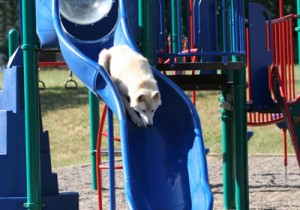
- Chicken broth giant ice cubes–these can be given to the animal, or hung so they drip all day.
- Buster cube or any object with food that comes out a hole.
- Large hard Plaque attacker. (observe for the first few days make sure no large pieces are being removed and eaten)
- New locations: rotate their enclosure, build separate play yards they can go into, take them to new places—beach, mall, mountains, car rides, etc.
- Hanging tire.
- Tug toy from a rope attached up high to a rubber spring or you play tug with them yourself.
- Knuckle bones.
- Wobble board or large ball on which you teach the animal to balance. (Great for proprioception)
- Treadmill or underwater treadmill.
- Loose crickets, mice, or rats. (assuming your stomach and ethics do not object)
- Feeder fish in pool. (assuming your stomach and ethics do not object)
- Container that has food inside.
- Different surfaces– bark, sand, rock, grass, astro-turf, metal, tile, plastic, etc.
- Button to press that plays a song.
- An endless pool.
- A wind chime hung high.
- Some little mirrors or a disco-ball hung high that will make lights move around as they blow in the wind.
- Tunnel.
- A sprinkler or other water-spraying device, especially if the water moves.
- Hang food where they cannot get to it, and give them a platform they can drag and climb on to get the food. It is even ok if sometimes they cannot succeed. Failure and hunger are parts of a full life too.
- Sounds– sometimes play stereo or TV, sometimes sounds of nature or dog shows. Make a loud noise, put food next to it, and let them spend the day working up the courage to get near it.
- Smells– sometimes spray a new cologne at the base of a tree or other object. Place in their pen a blanket from another animal.
- Set up an aromatherapy infuser.
- Water in which to play.
- Visual barriers.
- Boomer balls.
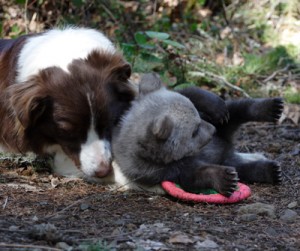
- An animal in an adjacent enclosure.
- A slide with treats at the top.
- A hole to dig in.
- Nylabones slathered in cream cheese.
- Do not feed in the morning and hide food around enclosure. (bury some and put some up high, etc.)
- New foods- broccoli, bananas, beef, even hot peppers or other things they may dislike.
- Big branches or old dead tree.
- Beam or plank on which to walk.
- Device that blows bubbles.
- Massage or T-touch.
- Big wooden box with various openings leading to food–some should have screw on lids, others sliding lids, others the food should be out of reach, etc.
- Buy or build toys with sliding doors that have to be moved to get to food. (Like tic tac toe)
- Build device that requires several steps to get food– pull one lever than go to other side of run and pull another and get treat.
- Vertical levels– build platforms at different heights and with ramps and steps, hammocks, etc.
- CHANGE– move stuff around, add stuff, take things out, etc.
Caring for any pet is a profound responsibility. We must constantly, objectively, and without ego, defensiveness, or self-interest, examine the lives we provide for our animals. We need to look at the whole picture and question whether the job we are doing is sufficient. At the end of each day we need to evaluate that day from our animal’s perspective: Was it perfect? Was it good enough? Can I do better tomorrow? Did they get enough attention, ideal nutrition, optimal exercise? Were they lonely or bored? Were their brains and hearts engaged? Were they comfortable? Was their day better than it would have been in the wild?
Ask friends with differing experience and perspectives to visit your home and provide input on any areas in which your animals’ lives could be improved, and be open to their suggestions.
Some animals live in the wild. Nature and chance dictate the quality and duration of their lives. Other animals live with us, filling our lives with wonder and joy, and it falls to us to ensure that those animals have lives that are not only safer, more comfortable and longer than they would be in the wild, but also richer and fuller.
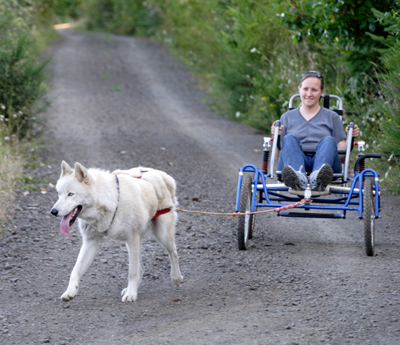
Note: As published in “Wolfdogs” magazine.
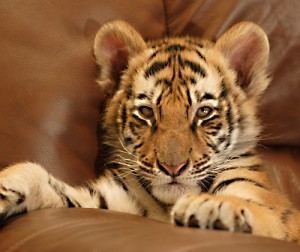 We have been caring for a young Bengal tiger named Titan. He was 8 weeks old and 15 pounds when he arrived, and around 22 pounds eight days later. He has around 500 pounds still to gain. He is on his way to a new and exciting life, and is here for some additional socialization. We are quite fortunate to have some wonderful colleagues who sometimes send animals here which allows us to keep learning and experiencing new individuals, and benefits the animals by exposing them to new experiences with trainers who are good at showing them that the world is a wonderful place. While with us, Titan will get to meet a wide variety of “other” animals and have different experiences. One aspect of training animals for film is that a wide variety of animals either live here or have visited, so all of our animals are quite welcoming towards visiting creatures. Last summer we had a baby camel in the kitchen and I opened the door to let the dogs say hello, and they walked right past her as though a camel in the kitchen was utterly expected…
We have been caring for a young Bengal tiger named Titan. He was 8 weeks old and 15 pounds when he arrived, and around 22 pounds eight days later. He has around 500 pounds still to gain. He is on his way to a new and exciting life, and is here for some additional socialization. We are quite fortunate to have some wonderful colleagues who sometimes send animals here which allows us to keep learning and experiencing new individuals, and benefits the animals by exposing them to new experiences with trainers who are good at showing them that the world is a wonderful place. While with us, Titan will get to meet a wide variety of “other” animals and have different experiences. One aspect of training animals for film is that a wide variety of animals either live here or have visited, so all of our animals are quite welcoming towards visiting creatures. Last summer we had a baby camel in the kitchen and I opened the door to let the dogs say hello, and they walked right past her as though a camel in the kitchen was utterly expected…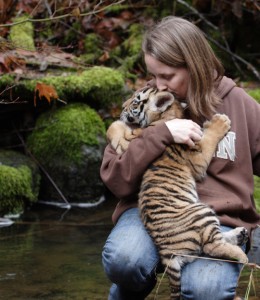 reinforce that you are the leader. I find that some people are far too permissive, and the animal learns that they can do whatever they want, and other people are far too proscriptive and the animal is essentially being told “no” all the time. I really try to set situations up where there are many obvious paths to success, so there are few rules, but then be absolutely clear about those rules. I also start right away by teaching a fun and positive game that is easy and gets a reward—usually put your feet on a mark. I make this a super fun game, so anytime the animal wants to do something I do not want I can tell him to go to the mark and suddenly he has a clear path to success.
reinforce that you are the leader. I find that some people are far too permissive, and the animal learns that they can do whatever they want, and other people are far too proscriptive and the animal is essentially being told “no” all the time. I really try to set situations up where there are many obvious paths to success, so there are few rules, but then be absolutely clear about those rules. I also start right away by teaching a fun and positive game that is easy and gets a reward—usually put your feet on a mark. I make this a super fun game, so anytime the animal wants to do something I do not want I can tell him to go to the mark and suddenly he has a clear path to success.
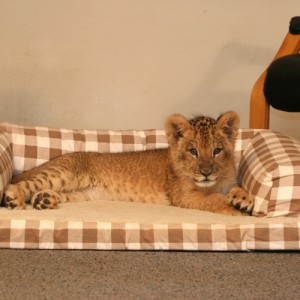 Today was one of those days when you try to stay inside. We mulled cider, finished decorating for Christmas, and played fetch in the living room. When we had to go outside to do chores we bundled up with mittens and hats. This is the first truly cold week of the season at our facility, and it has me thinking, again, about how technology benefits animals.
Today was one of those days when you try to stay inside. We mulled cider, finished decorating for Christmas, and played fetch in the living room. When we had to go outside to do chores we bundled up with mittens and hats. This is the first truly cold week of the season at our facility, and it has me thinking, again, about how technology benefits animals.
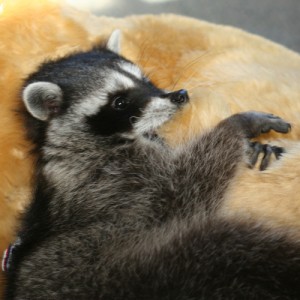 I write this article cuddled in my warm bed with dogs and cats while sipping cocoa. Looking over at Sequel, hogging the down comforter as always, I smile. Long ago, on a cold night like tonight, his ancestor took the first tentative steps out of the lonely dark to join my ancestor by the fire, and we are both immeasurably thankful. Our animals are all asleep; warm, with blankets and water and full stomachs. But I look out the window towards the woods and think about the many wild animals suffering. Some of them will find their way into our home, our pastures, or our vehicles, and some will have the reserves to endure the long bitter winter, but many will simply die—unable to find enough food or water and eventually succumbing to the brutal cold.
I write this article cuddled in my warm bed with dogs and cats while sipping cocoa. Looking over at Sequel, hogging the down comforter as always, I smile. Long ago, on a cold night like tonight, his ancestor took the first tentative steps out of the lonely dark to join my ancestor by the fire, and we are both immeasurably thankful. Our animals are all asleep; warm, with blankets and water and full stomachs. But I look out the window towards the woods and think about the many wild animals suffering. Some of them will find their way into our home, our pastures, or our vehicles, and some will have the reserves to endure the long bitter winter, but many will simply die—unable to find enough food or water and eventually succumbing to the brutal cold.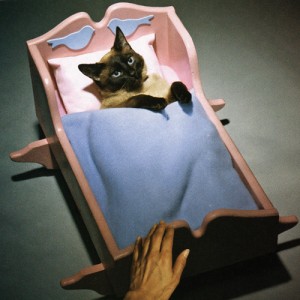
 animal rights organizations have relentlessly asserted that, “Animals belong in the wild; nature is beautiful, peaceful, and good; captivity is bad; if you love animals, leave them alone; animals are happier in the wild than in captivity; animals need freedom to be happy; if an animal ‘must’ be in captivity, the highest goal is to recreate a wild life as faithfully as possible.”
animal rights organizations have relentlessly asserted that, “Animals belong in the wild; nature is beautiful, peaceful, and good; captivity is bad; if you love animals, leave them alone; animals are happier in the wild than in captivity; animals need freedom to be happy; if an animal ‘must’ be in captivity, the highest goal is to recreate a wild life as faithfully as possible.”



 m, and generally being the center of attention was a perfect day for Loki, so of course we went… Every few hours Loki would go into his crate for a quick nap. He loved this also—for a border collie, Loki was quite lazy, and a good nap was among his favorite things. One day I was sitting there next to Loki’s crate when a woman came running up calling me a heartless bastard. I looked around to see what she meant, and after a moment realized she was talking about Loki, lying there on a soft bed in a crate trying to sleep but somewhat disturbed by her yelling… I reached down and opened the crate door. I thought it was a grand gesture that conveyed everything I was thinking. She got even angrier and told me that I had broken his spirit and he was too afraid to come out of the cage. So I called him out and he cheerily did a few tricks; I tossed the Frisbee for him a few times, gave him the last bite of my ice cream (hey, it was the Fair!), kissed him on the head, and sent him back into his crate to finish his nap…
m, and generally being the center of attention was a perfect day for Loki, so of course we went… Every few hours Loki would go into his crate for a quick nap. He loved this also—for a border collie, Loki was quite lazy, and a good nap was among his favorite things. One day I was sitting there next to Loki’s crate when a woman came running up calling me a heartless bastard. I looked around to see what she meant, and after a moment realized she was talking about Loki, lying there on a soft bed in a crate trying to sleep but somewhat disturbed by her yelling… I reached down and opened the crate door. I thought it was a grand gesture that conveyed everything I was thinking. She got even angrier and told me that I had broken his spirit and he was too afraid to come out of the cage. So I called him out and he cheerily did a few tricks; I tossed the Frisbee for him a few times, gave him the last bite of my ice cream (hey, it was the Fair!), kissed him on the head, and sent him back into his crate to finish his nap…